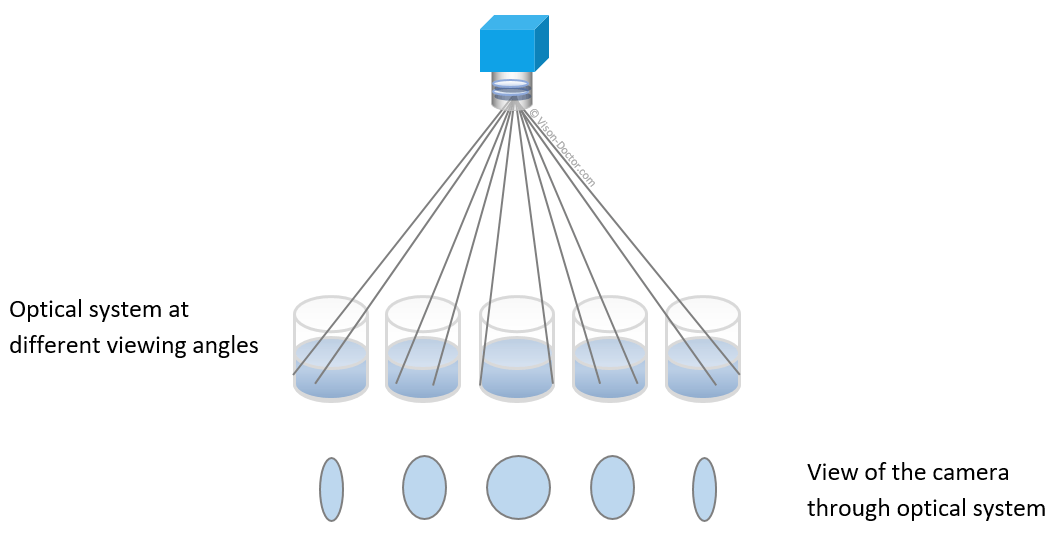Vignetting
Vignetting refers to the shading of the image towards the margin. It is very disturbing for machine vision, impairs measuring results and the finding of edges and objects.
Artificial vignetting
If the maximally possible optical path is constricted mechanically, e.g. due to the edge of the housing, lens mount or filter holder, we speak of artificial vignetting. It is easily comprehensible: hold the lens slightly inclined and look through. The effective opening through the lens narrows to an almond shape, neighbouring non-translucent areas constrict the image.
 |
This error can be reduced by stopping down the lens, as rays through the lens system close to the edge, which cause this error, are no longer possible.
Natural illumination falloff (vignetting)
The natural light falloff is caused by physical laws. The illumination falloff is proportional to the 4th power of the image angle. This error cannot be corrected by stopping down. Lenses with longer focal lengths fall off to a significantly lesser extent towards the margin; the smaller the camera sensor, the easier it is to produce lenses with less illumination falloff.
Important for imaging
- Slightly stop down the optics.
- Enhancement by the user: downstream software correction (shading correction) can normalise the brightness in the image.
- Use of high-quality corrected lenses with solid lens design. Please don't save money in the wrong place!
- State-of-the-art sensors apply micro-lenses on the pixels for enhanced sensitivity in order to enlarge the light-active surface. Particularly when using maximum size sensors there are camera-related vignetting effects, as pixels close to the margin are exposed only at an angle. A remedy can be double-sided telecentric lenses or the change to larger mounts, e.g. from C-mount to F-mount.
- Extreme marginal shading is often caused by too little or inhomogeneous lighting and hardly by the optics. Size matters! Use larger, better illumination!







